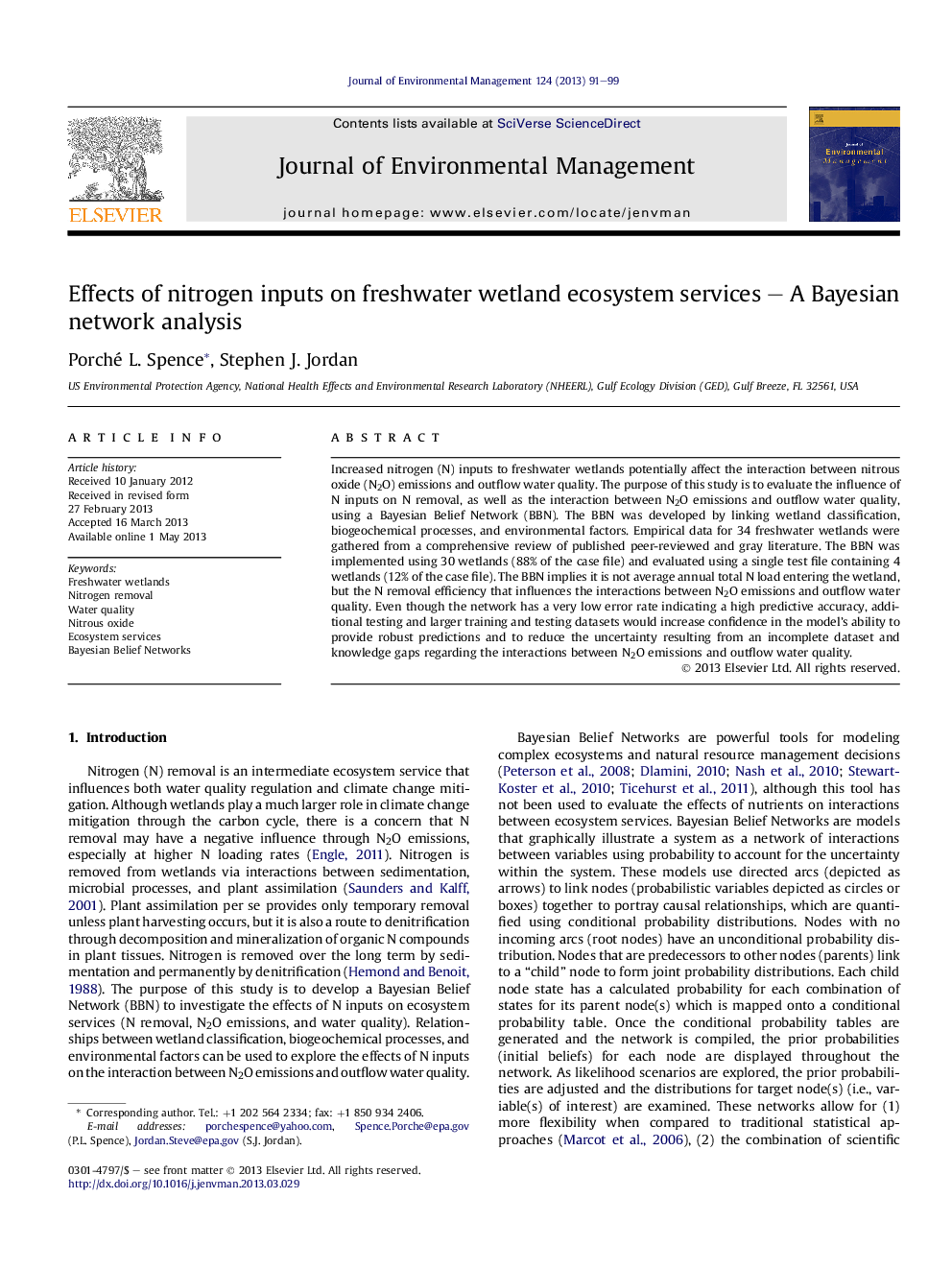| Article ID | Journal | Published Year | Pages | File Type |
|---|---|---|---|---|
| 1056265 | Journal of Environmental Management | 2013 | 9 Pages |
•Bayesian network provides a conceptualized viewpoint by integrating key variables.•N inputs did not affect the interactions between N2O and outflow water quality.•Wetland N removal efficiency affects the interactions between ecosystem services.•High uncertainty due to the lack of data and knowledge linking N2O and N processes.
Increased nitrogen (N) inputs to freshwater wetlands potentially affect the interaction between nitrous oxide (N2O) emissions and outflow water quality. The purpose of this study is to evaluate the influence of N inputs on N removal, as well as the interaction between N2O emissions and outflow water quality, using a Bayesian Belief Network (BBN). The BBN was developed by linking wetland classification, biogeochemical processes, and environmental factors. Empirical data for 34 freshwater wetlands were gathered from a comprehensive review of published peer-reviewed and gray literature. The BBN was implemented using 30 wetlands (88% of the case file) and evaluated using a single test file containing 4 wetlands (12% of the case file). The BBN implies it is not average annual total N load entering the wetland, but the N removal efficiency that influences the interactions between N2O emissions and outflow water quality. Even though the network has a very low error rate indicating a high predictive accuracy, additional testing and larger training and testing datasets would increase confidence in the model's ability to provide robust predictions and to reduce the uncertainty resulting from an incomplete dataset and knowledge gaps regarding the interactions between N2O emissions and outflow water quality.
